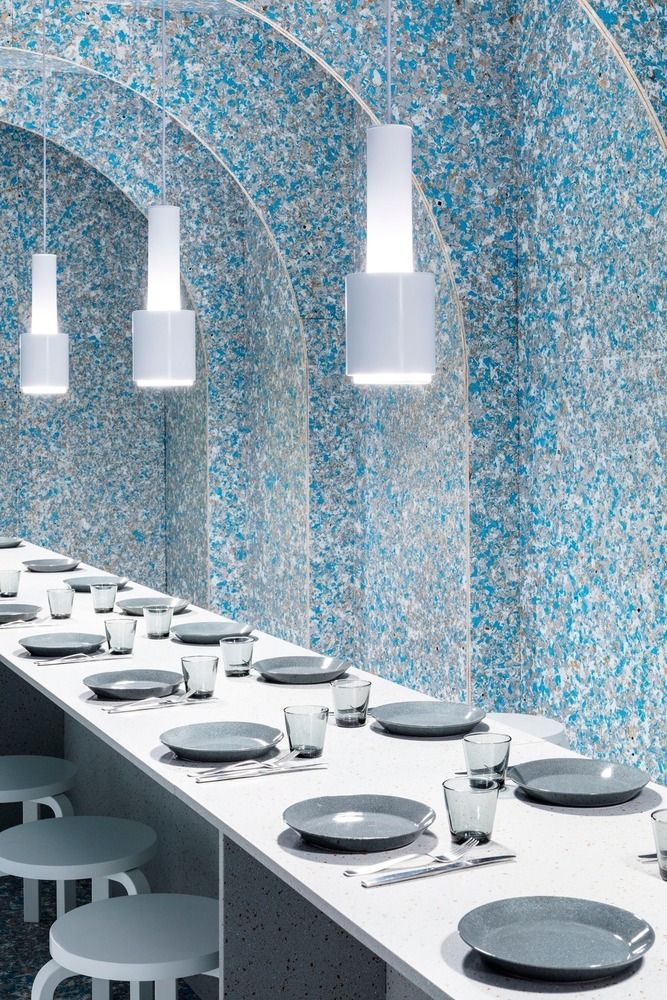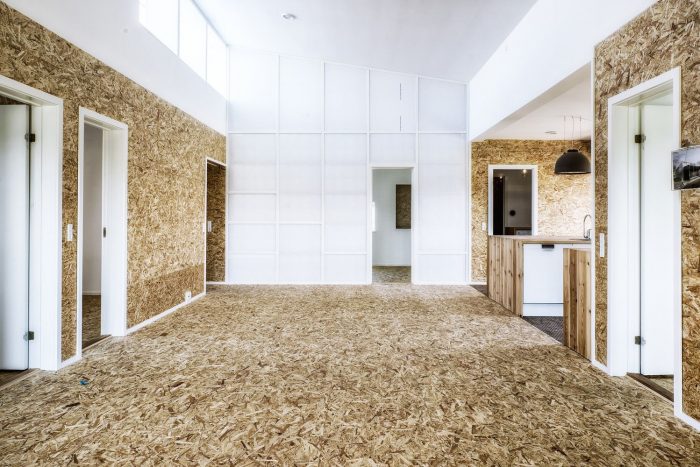According to the World Bank Group, the world generates around 2.01 billion tonnes of municipal solid waste (MSW) each year, and about 33% of that was is not managed in an environmentally safe manner. Aside from food and green, there are three other major sources of MSW in the world: 1. Paper and cardboard (17% of annual MSW worldwide); 2. Plastic (12%) and wood (5%).
It is no wonder, then, that throughout this list we are going to see designers and architects trying to integrate these recycled materials or reclaimed materials in their projects, whether interior design or exterior. As we have seen before, the world is moving more towards sustainability, especially in architecture – there are several choices for innovative low-income housing materials that might save the world. In this article, we are working our way from the outside in. We have already explored the use of reused and recycled materials in constructing buildings, and now we are going to explore how sustainability can be integrated into the very space we live in.
What material is most recyclable?
Steel is the most recyclable material. It is retraced from cans, cars, appliances, and construction materials, and it can be remelted through various methods to be recycled.
What are examples of recycled materials?
The Hotel Hotel Lobby | March Studio
Are you familiar with the term “reclaimed wood“? Well, in case you’re not, we’ll provide you with a brief introduction to it right now. Reclaimed wood is air-dried wood that’s left after demolishing buildings built with virgin wood. Reclaimed wood has history and personality and using it gives the interior of a place a distinct flavor. One of the perks of using reclaimed wood is that it has already served its purpose in another life, and now it can be reused as old-growth wood (that we can’t buy anymore). Reclaimed wood is stronger than virgin wood as its fibers which makes it an excellent building material that’s durable and reliable.
Hotel Hotel in Australia was developed by over 50 artists, makers, and designers. March Studio was one of the designers responsible for the development of the hotel and they had one major aim: using recycled materials.
March Studio excelled at the use of reclaimed wood in their design of the Hotel Hotel’s lobby. They used over 5000 lengths of reclaimed wood bound together with steel rods ad fixed all over the ceiling and walls. They sourced most of the wood from the leftovers from the construction of the hotel itself. These wooden beams were offcuts from the facade and the construction process and it was a great opportunity to show the majesty and character of reclaimed wood.
March Studio won the 2015 Award for Interior Design for their design of the Hotel Hotel’s lobby.
Paola Calzada Arquitectos | Flatpack Furniture
The Mexican architecture firm Paola Calzada Arquitectos is responsible for the production of flat-pack furniture that’s made using recycled plastic bottles and wood-fiber valchromat. Paola Calzada Arquitectos produce two types of furniture: either it’s made of 100% recycled plastic bottles, or from wood harvested from sustainability-certified Portuguese forests.
Their production line is named Luken and it includes a series of chairs, tables, and children’s tables that can be assembled without using neither glue nor nails as the plastic board/valchromat panels are made to slot together to form the chairs and tables.
This is not the first time that we are going to come across recycled plastic in this list as it is one of the biggest sources of municipal solid waste worldwide, and as a non-biodegradable material, it has been causing the environment great harm which we are finally coming to realize. This realization is pushing designers and architects down the path of reusing this material to add authenticity to their designs and help the environment at the same time.
Plastic Stone Tiles | Enis Akiev

Plastic Stone Tiles – The Nature of Waste, Enis Akiev
Inspired by a report by the Geological Society of America that a new ‘stone’ was discovered called plastiglomerate, Enis Akiev has decided to make her own plastic ‘stones’ at home. This report revealed that after a volcanic eruption on the island of Hawaii, the heat resulting melted plastic waste with surrounding natural materials such as sand, rocks, and lava and resulted in making this new stone. Enis Akiev then concluded that if we cannot get rid of plastic waste (because, seriously, there is no way to) then we could at least use it to create something beautiful.
Lately, designers either aim to integrate recycled plastic into their projects, or replacing it with other bio-degradable materials since plastic has a lifespan that ranges between 10 – 5,000 years. This means that plastic is not prone to wear or tear or any sort of degradation, rendering the material almost indestructible.
Akiev was able to develop these plastic tiles by imitating the natural process of rock formation: exposure and pressure. She collects household plastic waste and separates the plastic according to color, and then she cleans it, melts it, and presses it into its final form. This process results in colorful, captivatingly beautiful tiles that can be used in interior design to replace tiles made of stone.
Apartamento ready-made | azab
Azab were determined in the design of the apartment to forsake the whole concept of divided spaces for a more open approach to architecture. Their open approach did not stop at that, but it extended to the materials they used to construct the interior of the apartment. They used recycled Marquina marbles, that were used in the kitchen before the reconstruction, to floor the rest of the apartment. This approach limited the building material they used and ended up adding more flavor to the an-already daring design.
Hopefully, Azab’s integration of the reused and recycled in their apartment design will encourage more designers and architects to use materials that already exist on the site instead of importing new ones.
Nataša Perković | Palm Oil Byproducts Furniture

© Tomomi Takano
Nataša Perković exhibits yet another use for industrial and agricultural waste in creating her Reclaimed Oil Palm furniture collection. This time, she uses the fibrous waste from palm oil factories to create 3D lamps, chairs, and even plates.
Nataša Perković mixed the fibrous byproducts with polylactic acid (a bioplastic made from lactic acid) to form the new composite material needed for creating the chair. This composite material was then used as a 3D printing material. She proposes that when this material is used on an industrial scale, it would be easier to create these chairs using injection molding instead of 3D printing. Nataša Perković is offering a prototype for something that’s going to change the face of interior design.
Maunu Residence | Fung + Blatt Architects
The Maunu Residence is mainly constructed of recycled materials such as glass, corrugated steel, and redwood. The interior of the residence is absolutely warm due to the use of reclaimed redwood. As can be seen here, the reused wood offers depth to the interior design as its character was acquired through use and time, which are things that a designer cannot find in virgin wood.
Urban Retreat | Interface
Urban Retreat by Interface is one delicate design that’s natural, neutral, and definitely eco-friendly. Interface’s aim was to evoke the spirit of an old-growth forest, which they achieved that through using moss and lichen-covered stones. The material they used for the apartment is about 79-81% recycled and 35% of these recycled materials are post-consumer.
Here we were with the second part of our reused and recycled materials in architecture series with a close-up on interior design this time. Whenever architecture meets sustainability, there is no limit to what a designer or architect can do. We explored why opting for sustainability-approved materials is the best option and it’s not so just because of its impact on the environment. Reused and recycled materials have flavor; they have already served their purpose in another life and through reusing or recycling them, these materials live another life while holding onto their history.

















